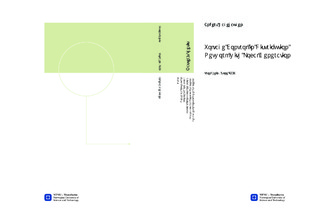| dc.contributor.advisor | Uhlen, Kjetil | nb_NO |
| dc.contributor.author | Hagehaugen, Anders | nb_NO |
| dc.date.accessioned | 2014-12-19T13:56:33Z | |
| dc.date.available | 2014-12-19T13:56:33Z | |
| dc.date.created | 2014-10-23 | nb_NO |
| dc.date.issued | 2014 | nb_NO |
| dc.identifier | 757935 | nb_NO |
| dc.identifier | ntnudaim:10900 | nb_NO |
| dc.identifier.uri | http://hdl.handle.net/11250/258030 | |
| dc.description.abstract | A growing trend is connection of new renewable energy resources to the power system. Small and medium-scale hydroelectric and wind power plants are examples of such new production with economic incentives being connected to the power system. The energy resources are often found in rural areas, and distribution networks are a feasible choice for connection. When connected, in general they are denoted distributed generation (DG). Connecting DG to distribution networks may imply challenges related to voltage rise, due to inherent network properties and the resulting power flow. Voltage control is necessary to obtain satisfactory voltage level at all operational situations. An effective voltage regulation may be achieved by use of an on-load-tap-changer (OLTC). The main contribution of the thesis is moving away from a conventional transformer voltage control in which voltage are kept constant at the transformer secondary side to an approach in which power flow decides tap-changer position. Voltage level is a function of power flow through the transformer. Measured voltage and line current are used to determine tap-changer setting on an OLTC equipped transformer. Power loss and coordination with other voltage regulation mechanisms are focused. The input signal to the tap-changer control are manipulated by use of parameters multiplied with the measured line current and added together with the measured voltage. The principle is the same as used in the traditional transformer model with line drop compensation. It requires no communication. Compensation parameters are determined by a desired contribution at a given operational situation. A droop relation between active power flow and transformer secondary side voltage is obtained by use of these parameters. Assessment and analysis of voltage control are carried out through power flow calculations and dynamic simulations. From simulations and calculations performed on simplified radial networks, the transformer voltage droop control is seen to be beneficial with respect to reducing network losses. In addition, it can be used to ease coordination with other voltage regulation mechanisms. Other voltage regulation mechanisms could be voltage regulators on synchronous generators. Results from a given network presented indicates that a loss reduction by some 15 \% can be obtained when adapting tap-changer position to network operational situation. Furthermore, results indicates that traditional tap-changer control methods may cause erroneous tap-changer operation in networks with high share of DG production. A challenge in networks with low reactance/resistance relation with high share of DG production at low load, may be export of active power and import of reactive power. The mentioned operational situation may be related to challenges with OLTC operation. Reactive power is seen to have a greater impact on tap-changer operation than active power. Export of active power may cause voltage rise along the network feeder, while import of reactive power may imply undesired tap-changer operation and increased losses. By use of the proposed transformer voltage droop control scheme, challenges related to opposite direction of active and reactive power causing challenges with OLTC operation are seen to be reduced. | nb_NO |
| dc.language | eng | nb_NO |
| dc.publisher | Institutt for elkraftteknikk | nb_NO |
| dc.title | Voltage Control in Distribution Network with Local Generation | nb_NO |
| dc.type | Master thesis | nb_NO |
| dc.source.pagenumber | 158 | nb_NO |
| dc.contributor.department | Norges teknisk-naturvitenskapelige universitet, Fakultet for informasjonsteknologi, matematikk og elektroteknikk, Institutt for elkraftteknikk | nb_NO |

